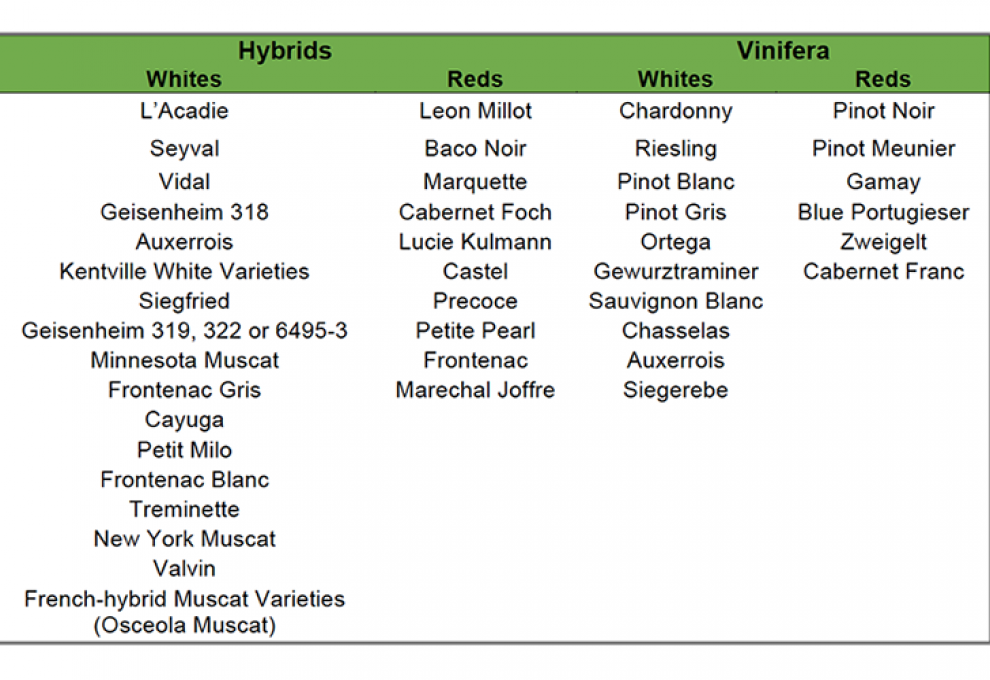
With 632 acres under vine, Nova Scotia’s grape growers are a hardy bunch. Mostly clustered in the Annapolis Valley with the moderating climate of the Bay of Fundy, these growers are heartened with the recent news of $1 million provincial government funding for expansion.
“It’s doable to double our acreage by 2020,” says Stewart Creaser, Avondale Sky Winery, who aims to expand from 22 to 30 or 35 acres in the next few years. While it costs between $15,000 and $30,000 per acre to get into production, grape-growing sites are available at reasonable cost. Dating back to 1986, his vineyard is one of the oldest planted in the province to such white varieties as L’Acadie, Guisenheim and Petit Milo. Reds include Marchel Foch, Leon Millot and Lucie Kulmann.
The program will pay each grower up to $6,550 per acre to cover land clearing, tile drainage, plant material, stakes and contracted labour. Growers with a minimum of five acres planted can apply. And new entrants are eligible for funding, provided they submit a plan by 2018 and have a contract with an existing winery.
“We have a lot of new entrants from all walks of life who haven’t necessarily grown anything in their life,” says Chris Duyvelshoff, grape specialist, Perennia. “That means we’re teaching about basic soil nutrition, disease and pest management.”
The Nova Scotia Vineyards Expansion and Development Program provides partial funding support, providing a specific list of hybrids and vinifera varieties suitable for the climate. While the varietal choices are important, Duyvelshoff says it’s also key to grow varieties for styles of wine that will sell in the province. The Winery Association of Nova Scotia has developed a Tidal Bay appellation with specific guidelines on quality characteristics to meet the standard.
About 12 per cent of Nova Scotia’s wine purchases are attributed to locally-produced wines. Compared to global or even Canadian standards, that’s a low percentage with lots of room to grow consumer loyalty.
“Credibility is the biggest part of our challenge,” says Creaser. “There’s a preconceived notion that we can’t produce good wines here in a marginal climate, but we’re starting to get the recognition. We can produce some world-class sparkling wines and crisp, aromatic whites that can’t be grown elsewhere. I predict a future for rosé wines.”
He also says that the province has microclimates in the Digby, Brador Lakes and South Shore areas that are showing promise.
Altogether, the industry is rallying for both domestic and international growth. Earlier this winter, a conference was held titled “Liquid Courage: Building Confidence in your Beverage Business.” Successful innovators such as Ashley McConnell from the Benjamin Bridge winery and Matt Rogers, Bishop’s Cellar shared their perspectives.
For now, Stewart Creaser is sticking to the business plan for his boutique winery near Newport. As one of 20 wineries in the province, he’s looking to carve out a share of farmgate sales of more than $15 million.

Add new comment